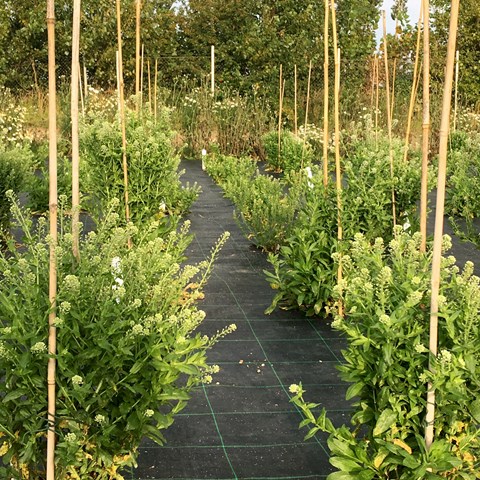The domestication of the wild plant field cress has been going on for 20 years. Now a team of researchers at SLU have made discoveries that can speed up the process. The researchers have found variants of 30 genes that affect important traits in the plant, and thus they can select the right individuals knowing it will affect the offspring’s traits in the right direction.
Researchers have found variants of thirty important genes in the genome of the oilseed plant field cress (Lepidium campestre) and its relatives. Those genes determine for example the time of flowering, oil quality, and how easily the seeds fall of the plant when mature. The researchers will be using this knowledge to choose the right plants in the domestication of the wild plant.
The project to tame the field cress has been running for about 20 years at the Swedish University of Agricultural Sciences. This plant would be suitable for our northern fields in Sweden. As a biennial oil crop, field cress could function as a catch crop as well, by taking up the nutrients in the soil that otherwise would leak out into the lakes and oceans. But the plant has a couple of ”wild” traits that are not fit for cropping, and it is the variation in those that the researchers have identified.
The interesting variation was found both within the field cress species and between species belonging to the genus Lepidium. The idea is that this knowledge about the genetic variation can help to speed up the domestication of the oilseed crop. The identification of this variation in the genes also reveals something about how the species within the genus Lepidium have changed during the evolution. Field cress is more closely related to Smith’s pepperwort (Lepidium heterophyllum)than to the pepperwort Lepidium hirtum.
– We studied the closely related pepperworts Lepidium heterophyllum and Lepidium hirtum in order to exploit some of their good qualities by crossing them with field cress, explains Cecilia Gustafsson, one of the researchers behind the study.
Field cress is also fairly closely related to the model plant thale cress (Arabidopsis thaliana), a species that is very well studied in terms of which genes that controls different traits. This was something that the researchers could make use of. They looked for genes in field cress that was similar to known genes in thale cress, and thereby they could identify the genes for venalization, florescence, pod shattering and quantity and quality of oil.
The work was funded by the research programme Mistra Biotech and grants from the Swedish Foundation for Strategic Researchand was recently published in the scientific journal in BMC Genetics.
Contact:
Cecilia Gustafsson, postdoctor at the Department of Plant Breeding, SLU, +46 (0)73-613 80 70, cecilia.gustafsson@slu.se
